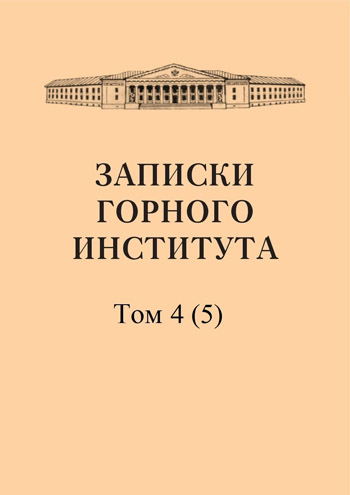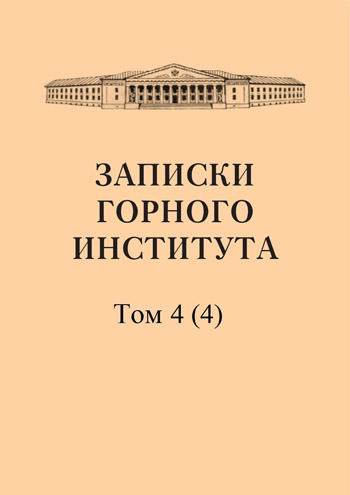-
Date submitted1913-06-16
-
Date accepted1913-08-13
-
Date published1913-12-01
The simplest course of crystallographic research operations
- Authors:
- E. S. Fedorov
Difficulties in crystallographic practice include difficulties in compiling tables of crystal chemical analysis and the actual research techniques. The author formulates the course of operations necessary for a complete geometric study of crystals of one substance, assuming that the goniometer is calibrated and satisfies the conditions stated above (see article). Before each individual series of measurements, one should start by setting the zero. The first measurement, leading to the compilation of a diagram in stereographic projection, serves for a closer acquaintance with the crystal and the selection of the main faces. If the substance has already been described, then often this first measurement makes it possible to derive the correct installation and the associated symbol of the complex, and therefore to determine the substance from the tables.
-
Date submitted1913-06-24
-
Date accepted1913-08-27
-
Date published1913-12-01
About “sulfur solutions” of all colors of the spectrum. (On the question of the reason for the coloring of ultramarines)
- Authors:
- P. P. Von-Weymarn
It has long been noticed, during certain physical and chemical processes with substances containing sulfur, the appearance of violet, indigo-blue, blue and green colors, sometimes remarkable in their beauty. These color reactions are historically closely related to hypothetical modifications of elemental sulfur; black, translucent blue in thin layers, Magnus sulfur and Wehler blue sulfur. The presence of these modifications in ultramarine has been explained by a number of scientists for its varied colors.
-
Date submitted1913-06-09
-
Date accepted1913-08-25
-
Date published1913-12-01
Concentric stacking of symmetrical sets of equal spheres
- Authors:
- E. S. Fedorov
If we are given a type of symmetry and, in accordance with it, on one given sphere we place equal spheres in layers at the distance of their centers from the center of a given sphere and, moreover, in such a way that these spheres fit into the recesses between the previous ones and form a regular set, then the number of spheres of the layer will be quite definite, namely, it will be equal to the value of symmetry in the general case, when the direction of the radius vector of each such sphere (starting from the center of the initial sphere) will be common (that is, neither coincides with the axes of symmetry, nor is in the planes of symmetry), and will a certain divisor of this number in particular cases. I will consider three sets of spheres of hexakisoctahedral type of symmetry, corresponding to the three possible systems of parallelohedrons in this case: triparallelohedrons, hexaparallelohedrons and heptaparallelohedrons, as well as a set of dihexonic-bipyramidal type of symmetry (and a system of tetraparallelohedrons).
-
Date submitted1913-06-29
-
Date accepted1913-08-25
-
Date published1913-12-01
Some elementary geometric theorems and problems related to collections of imaginary circles and spheres
- Authors:
- E. S. Fedorov
Imaginary circles play a very important role in solving geometric and crystallographic problems. Imaginary spheres also play a huge role. But when solving some problems related to some simple sets of imaginary circles and spheres, as problems of an elementary geometric nature, difficulties arise that are easily eliminated precisely thanks to the simple properties of these sets. The article discusses possible ways to solve these problems.
-
Date submitted1913-06-28
-
Date accepted1913-08-20
-
Date published1913-12-01
Cone ranks and a simple way to recognize these ranks
- Authors:
- E. S. Fedorov
If, taking the center of the cone as the center of the sphere, we intersect it with the surface of this sphere, then the cone will be replaced by a spherical coneprime, which is why the task at hand is reduced to recognizing the ranks of coneprime on the sphere. A similar problem of determining the ranks of flat conoprimes is resolved by determining the type of involution of the points of the conoprime on an extra straight line (infinitely distant) or the involution of rays at its center. The article introduces new ranks of conoprimes and a method for recognizing them.
-
Date submitted1913-06-22
-
Date accepted1913-08-27
-
Date published1913-12-01
Diagram of flat conoprimes
- Authors:
- E. S. Fedorov
The numerous and useful results that came from drawing up a diagram of spherical conoprimes prompted me to take up, as a simpler case, drawing up a diagram of flat conoprimes. Of course, in both cases the difference is enormous. There we are dealing with the second of conoprime; here only with prima, since the totality of all similar conoprims has to be considered as one single one. There, each conoprim is characterized by the angular magnitude of two axes, which are always real; here only the main (major) axis is always real, while the minor axis in hyperbolas is the imaginary axis. The diagram is based on combining all similar conoprims into one. But in the composition of hyperbolas there is a striking exception in relation to similarity, namely the extreme difference of hyperbolas with equal angles between asymptotes, that is, the pair of asymptotes itself, like a hyperbola, cannot be called similar to all the others. For this reason, the diagram does not include special hyperbolas consisting of a pair of rays.
-
Date submitted1913-06-24
-
Date accepted1913-08-12
-
Date published1913-12-01
Conoseconds chart
- Authors:
- E. S. Fedorov
The author compiled the accompanying diagram, using, as for the diagram of spherical conoprims, a stereographic grid, excluding small circles from the latter. The diagram of conoseconds, as well as the diagram of flat conoprimes, is built on the principle of similarities, that is, all similar conoseconds are taken as one. The main purpose of the diagram is to determine, in relation to the three main axes of the conosecond, those three conoprimes that are formed in the conosecond in the three planes of its symmetry.
-
Date submitted1913-06-24
-
Date accepted1913-08-09
-
Date published1913-12-01
Basic formulas of spherical and plane tetragonometry
- Authors:
- E. S. Fedorov
The formulas of spherical tetragonometry are considered, which are also applicable to plane tetragonometry. For practical purposes of crystal chemical analysis, the graphical techniques used are quite sufficient, despite the inaccuracy associated with them. But over time, as the material expands, the need for replacement of roughly obtained numbers with more accurate, which in many cases will reduce the increasingly complex labor of finding in the tables the substance defined as the symbol of the complex. A closer acquaintance with the upcoming problem shows that here it is not just necessary to solve spherical trigons at three given angles, which is precisely what is exhausted by spherical trigonometry, but that here it is possible to calculate spherical elements, in an indefinite number obtained by constructing from given four points, and find for each such element a corresponding formula expressing it even with an arbitrary change in the position of the four main points.
-
Date submitted1913-06-16
-
Date accepted1913-08-08
-
Date published1913-12-01
Calculating the numbers of the symbols of a complex
- Authors:
- E. S. Fedorov
Experience has shown that at present, the approximate numbers that are obtained using relatively crude graphic techniques are quite sufficient for the individual characteristics of each substance, that is, for crystal chemical analysis. But as new crystallographically described substances accumulate, and such accumulation proceeds at an accelerated rate, the time must someday come when greater accuracy will be required in expressing the results of measurements.
-
Date submitted1913-06-08
-
Date accepted1913-08-15
-
Date published1913-12-01
Practical solution to the problem of performing a linear prime conoprimes using two data
- Authors:
- E. S. Fedorov
It was to this task that Shteiner dedicated his famous work on the linear primas of conoprimes (Kegelschnittbüschel) and it was in it that he presented it with such exhaustive completeness that there would be absolutely nothing to add to it, if only he had not limited his task in advance to material conoprims; Between those data there may be imaginary conoprimes, even if in essence they are only ellipses, since imaginary hyperbolas are equivalent to real hyperbolas with the same asymptotes, the so-called conjugates.
-
Date submitted1913-06-20
-
Date accepted1913-08-18
-
Date published1913-12-01
About imaginary conoprimes and conoseconds
- Authors:
- E. S. Fedorov
In the very foundations of the new geometry lies the concept of involution and two cases are distinguished: involution with a pair of real (hyperbolic) and a pair of imaginary (elliptic) double elements. In particular, how for points on a line we can move from one type of involution to another if one from the systems of points that make up the involution, we turn it over so that the points that were conjugate to themselves (double) become conjugate to each other, so in the involution on the plane (polar system), the conoprime that determines the involution becomes imaginary (see article). The difference between the real and imaginary conoprime is clarified, as well as the real and imaginary conosecond. The example shows polar relations for all imaginary conoprimes and conoseconds.
-
Date submitted1913-06-17
-
Date accepted1913-08-16
-
Date published1913-12-01
The system of vector circles is identical with the system of spheroprimes of rays
- Authors:
- E. S. Fedorov
By a strange accident, not a single geometer, as far as I know, was given a system of spheroprimes of rays, while the system of spheroprimes of points was one of the first established geometric systems, except for the system of spheroprimes of both points and rays, which was so ahead of its time, derived by Mr. Shteiner. At the basis of the system construction is a linear prime; and now we will set ourselves the task of constructing a linear prime of spheroprimes of rays.


